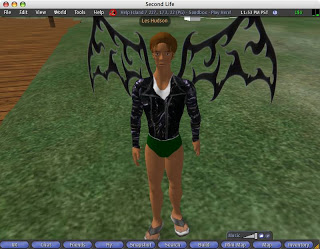When I tried to run Second Life’s beta release on linux, from the command line, I got the following error:
64-bit Linux detected. Running from /home/celesteh/.secondlife-install - Installing menu entries in /home/celesteh/.local/share/applications bin/do-not-directly-run-secondlife-bin: error while loading shared libraries: libGL.so.1: cannot open shared object file: No such file or directory *** Bad shutdown ($LL_RUN_ERR). *** You are running the Second Life Viewer on a x86_64 platform. The most common problems when launching the Viewer (particularly 'bin/do-not-directly-run-secondlife-bin: not found' and 'error while loading shared libraries') may be solved by installing your Linux distribution's 32-bit compatibility packages. For example, on Ubuntu and other Debian-based Linuxes you might run: $ sudo apt-get install ia32-libs ia32-libs-gtk ia32-libs-kde ia32-libs-sdl ******************************************************* This is a BETA release of the Second Life linux client. Thank you for testing! Please see README-linux.txt before reporting problems.
I checked if I had libGL.so.1 installed. I did:
$ sudo find / -name libGL.so.1 [sudo] password for celesteh: /usr/lib32/mesa/libGL.so.1 /usr/lib/x86_64-linux-gnu/mesa/libGL.so.1
I went to the directory where Second Life installs itself (the install.sh script tells you where this is when you run it. And I edited the script called SecondLife. I changed this line:
export LD_LIBRARY_PATH="$PWD/lib:${LD_LIBRARY_PATH}"
To this:
export LD_LIBRARY_PATH="$PWD/lib:/usr/lib32/mesa:${LD_LIBRARY_PATH}"
Note that /usr/lib32/mesa is one of the results I got from running find. It’s the one that seems to be 32 bit.
After I fixed that, it opened (and popped a warning saying my computer is underpowered, which I assume is another library issue. I have NO IDEA what to do about this. Will update if and when I figure it out.
I know what you’re thinking. and the answer is that the network is the computer. And the live coding is the music. and SecondLiveCoding is the future.



